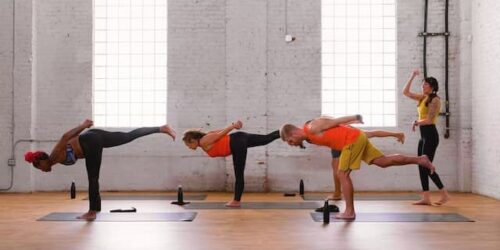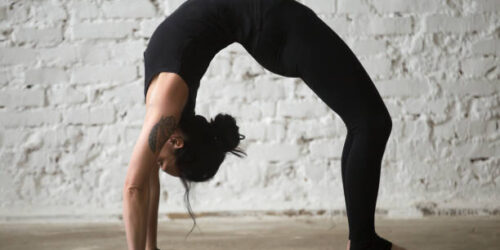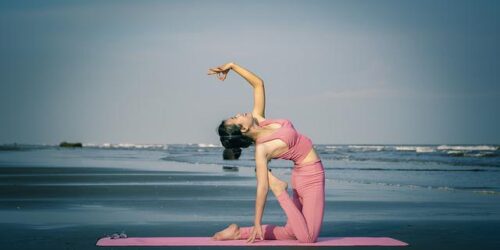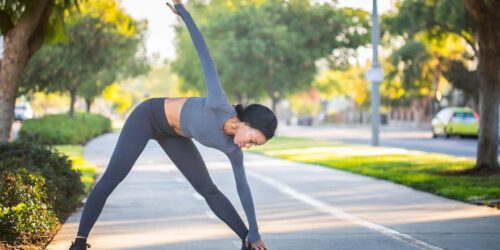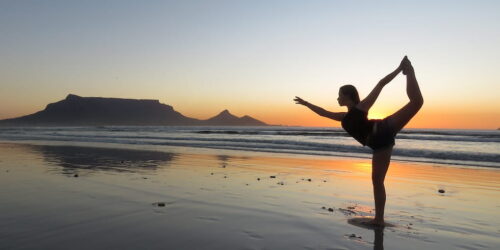How Many Calories Burned By Stretching: Facts You Should Know
Stretching ought to be a component of a comprehensive fitness regimen. It is thought to aid in preserving your joints’ full range of motion, lower the risk of injury, and even lessen stress.
You might also wonder if stretching helps with weight loss, tones your body, or burns calories in addition to these advantages.
The different kinds of stretching discussed in this article, the number of calories burned while stretching, and starting point suggestions.
Table of Contents
What is Stretching?
In order to increase a muscle or tendon’s elasticity (how far it can move during its range of motion), stretching is an exercise technique that involves stretching and flexing the affected area. Stretching promotes muscle control and tendon or muscle flexibility, which increases the range of motion.
Both humans and animals stretch on instinct, according to the dictionary. When you wake up from sleep, sit still for a long time, or leave small spaces, it happens automatically.
The Different Types of Stretching
Static Stretching
Everyone has heard of static stretching, which involves getting into a stretched position and holding it there for 30 to 60 seconds.
After a workout or in the morning after warming up, this kind of stretching is best performed.
Before a workout, static stretching should be used sparingly, if at all, as it increases the risk of injury and inhibits muscle growth.
Dynamic Stretching
Stretching while moving is referred to as dynamic stretching. Therefore, using momentum, you will alternate between being stretched and not stretched.
Before a workout or engaging in any physical activity, dynamic stretches are best used. Dynamic stretching can be performed cold or before warming up because it can act as a warmup. It helps the muscles warm up.
Starting with dynamic stretching is safer because it warms up the muscles and tendons while stretching them by using movement and stretching the muscles and tendons at the same time.
In order to improve recovery and longevity, athletes stretch dynamically prior to competition and slowly afterward.
Yoga
Yoga is a holistic method of mind-body exercise that involves both static stretches and dynamic stretches for what is called “meditation in motion”.
Taichi is credited with bringing meditation into motion, but Yoga, which originated in ancient India, and teaches you to control your thoughts and become more mindful, is a discipline.
Numerous athletes and regular people use yoga pose to unwind after workouts, reduce stress, and help with joint and back pain.
Due to its benefits, yoga is widely accepted as a complementary and alternative therapy for a variety of health issues.
Yoga is safe for everyone to practice thanks to the wealth of free online tutorials and information, but it is advised that you speak with your doctor before trying any new exercise program or dietary supplement.
Does Stretching Burn Calories?
Stretching aids in weight loss and calorie burning. The number of calories burned varies depending on the person’s weight and the length of time they spend stretching.
It doesn’t take much energy to stretch, making it a low-impact exercise.
This activity doesn’t burn many calories because it requires little energy. Additionally, the rate of weight loss is also very slow.
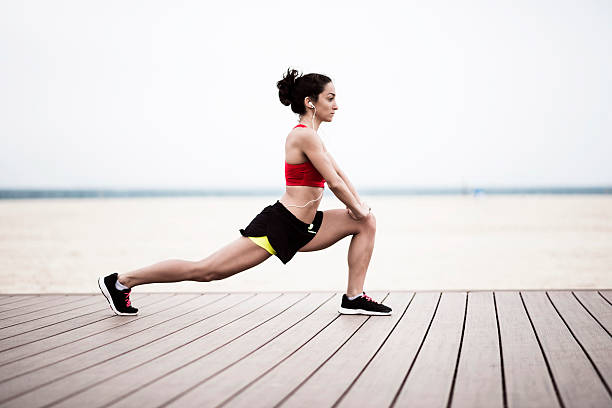
How Many Calories Does Stretching Burn?
In general, stretching is not thought to burn many calories on its own.
Stretching typically burns only 2.7 calories per minute for a person weighing 150 pounds (68 kg). This would add up to 27 calories if your stretching routine lasts 10 minutes.
Stretching can help reduce this number when done in conjunction with activities of moderate to high intensity, such as dynamic warm-ups and some types of yoga, such as power yoga.
Currently, dynamic stretching, light aerobic exercise, and sport-specific movements are advised for athletic warm-ups. That would equate to about 41 calories over the course of a 10-minute warmup.
Comparatively, higher-intensity yoga, such as power yoga, burns about the same number of calories as a dynamic warmup, or 36–71 calories in 10 minutes. That would amount to 216–426 calories for a 60-minute yoga session.
Therefore, the amount of calories burned during a stretch is minimal unless it is combined with a lengthy stretching session or another exercise.
How and When to Stretch During Workouts
Dynamic Stretches before a Workout
To a warm-up routine before exercise, dynamic stretching and easy aerobic exercises can be added. Your muscles will become warmer, as a result, improving their elastic qualities.
Think about how a warm rubber band can stretch further and is less likely to break than a cold rubber band to get the idea.
Warm up your muscles by starting with easy aerobic exercises like cycling, light jogging, or walking. After that, gradually increase the size of your dynamic stretching movements, such as arm circles or leg swings that go forward and backward.
Static and PNF Stretches before Or Between Sets
Prior to exercise, during resistance training, and during sprint intervals, static and PNF stretching can be done. As a result, exercise movements may have a sufficient range of motion.
Hold the stretch for no longer than 60 seconds per muscle group and keep the level of discomfort light to moderate to prevent any negative effects on strength and exercise performance.
Stretches After a Workout
The addition of stretching can be made during the cooldown period following the exercise. Engaging in endurance-style activities like strength training, where the same movement is repeated for a longer period of time, can aid in regaining range of motion.
The muscles and tendons adjust to the forces acting on them, just like when you’re sitting. Running and other high-rep or high-intensity exercises can reduce the flexibility in the legs, which can be regained by stretching.

Health Benefits of Stretching
Increases Muscle Flexibility
Regular stretching improves the flexibility of your muscles. Stretching before exercising is advised by health and fitness experts to increase the effectiveness of the workout.
Before entering the field and beginning their sport, athletes stretch for a short while. Any type of high-intensity interval training benefits from stretching before you begin.
Increases the Range of Motion
Stretching helps to increase muscle range of motion because it increases muscle flexibility.
The range of motion is important for the best performance whether you are just exercising or training for a sport.
By stretching, you force your muscles to move past their current limit. And when you stretch for a long time, your muscles’ range of motion expands.
Increases Blood Flow to the Muscles
The blood flow to the various parts of your body is reduced when you spend the majority of your time stationary.
Blood is distributed more evenly throughout the body thanks to stretching. You can work as efficiently as possible all day long thanks to the body’s regular blood circulation.
Boosts Your Mood
Stretching jolts your body out of its slumber. You can work your way out of a bad mood if you try hard enough.
You feel better after stretching, and it helps you get ready to take on life’s challenges head-on. Stretching helps you feel even better over time because it burns calories.
Helps Prevent Back Pain
Your muscles lose some of their range of motion when you are immobile for an extended period of time. This makes you more vulnerable to muscle strains in the back
By increasing your range of motion, stretching can shield your body from potential back pain problems.
Tips for Stretching
Start Slow
As you get used to the discomfort of the stretches, expanding your range of motion becomes easier. Additionally, control your movements.
Work into Moderate Discomfort at Most
An alternative to pain is this. It’s critical to distinguish between pain and stretch sensation.
Consider the Timing
According to research, giving yourself at least 10 minutes between stretching and the event may be the best way to avoid a performance decline if you’re warming up for exercise, a contest, or an athletic event.
Keep Consistent
When it comes to chronic increases in muscle length, consistency is essential. This holds true regardless of the technique you use to improve your flexibility, though ballistic stretching may be an exception.
Summary
Stretching comes in many forms, and it has been proven that each one increases joint flexibility and gets your body ready to move. Although stretching by itself doesn’t burn a lot of calories, you can still use it as a warm-up before exercise or as a component of more strenuous practices, like some types of yoga.
More research is required, but stretching may also increase muscle hypertrophy when done in between sets or with active resistance. Stretching can be done before, during, or after an exercise session and is simple to incorporate into your exercise routine.
